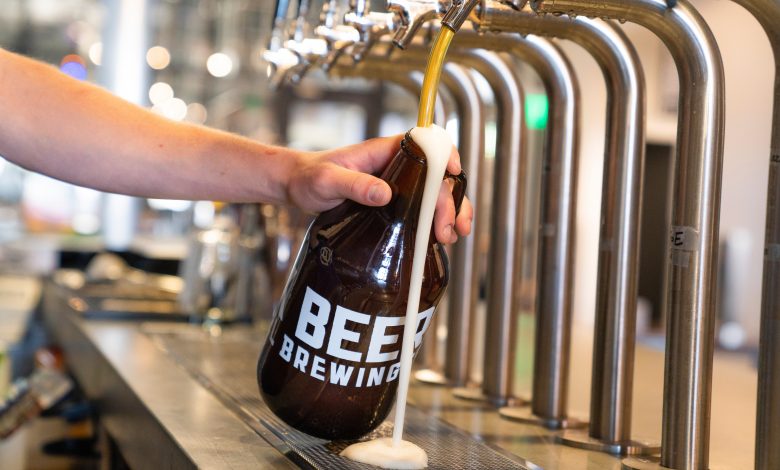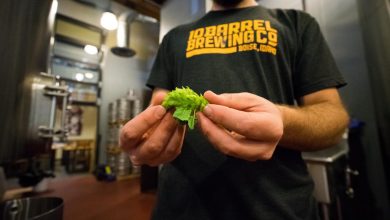Choosing the Right Yeast for Your Beer: Experimenting With Different Yeasts

For the new homebrewer, having a deep understanding of your yeast strains and how they are functioning is not the highest priority. With the first few beers you are making, you may not understand how different yeasts behave under different circumstances, but as long as you know the environment you need to create for the reactions you are looking for, you can get the job done. A quality brewing packet will inform you on how to set up the best environment for your yeast so they can get the alcohol making job done for you.
For homebrewers that have grown beyond the ‘follow the instructions’ method and are ready to begin getting a little more experimental, it is vital to gain more understanding about yeast cultures. Gaining this knowledge will put you in a better place to understand what you can and cannot do with these strains of yeast.
In the first article, we began discussing the performance indicators of yeast strains. These indicators give you a better interpretation of what you are working with and teach you how to think about your yeast. Now, we’ll jump into some of the specific strains of yeast and what you can look to expect from them.
For this article, we will be referencing the indicators that we mentioned in the original post: attenuation, flocculation, temperature range, alcohol tolerance, and the sensory values of flavor and aroma. Reading the initial article before moving into this one would be best to understand the references being made.
Types of Yeast Strains

There is a wide variety of yeast strains. For the purpose of this introductory article, we will stick with the largest over-arching categories. As you progress through your understanding of yeasts and the different strains, you will begin to recognize the nuances among different types. While the classifications help to understand what you are producing, it is still important to realize there remains a lot of variety within each category.
Ale Yeast
There is a wide variety of ale yeast strains. In fact, two of our following categories, wheat and Belgian, are technically considered ale strains. With the variations that exist in this category, there is a vast range of reactions you can expect from separate strains. Some will attenuate differently than others, some flocculate differently, and flavors, aromas, temperature range, and alcohol tolerance can vary as well.
While you should anticipate some variety in these strains, they do carry a bit of consistency as well. Many ale yeast strains ferment best around temperatures of 68 degrees Fahrenheit (20 degrees Celsius) and can tolerate temperatures as high as 95° F (35°C). The range of flavors and aromas that can result from ale yeast is quite broad. Ale yeast strains with more esters and alcohols will trend towards the fruitier end of the spectrum, while some ale strains will result in cleaner profiles more like a Kölsch and possibly reminiscent of lagers. These ‘cleaner’ ale strains can be popular since they will produce lager-like quality through ale style production.
The fruitier ale yeasts tend to have a bit less versatility to them. They flocculate quickly, giving the yeast and solution a different look during fermentation. These styles of yeast can be popular since there is more opportunity to bottle and consume this style of beverage with greater haste.
Ale yeast is also known as a top fermenter. This is referring to the way the yeast collects at the top of the wort early during fermentation. This opens the opportunity for what is called top-cropping. This is a risky strategy that can provide the brewer with a great crop of yeast but also exposes your product to the environment. This could result in undesirable bacteria destroying your brew. It is not suggested that you attempt top-cropping if the area of your fermentation is not very well sanitized. Some yeast strains are better for top-cropping than others.
Lager Yeast
One of the main differences from ale yeasts is that lager yeasts ferment best at colder temperatures. A typical temperature for lager fermentation may be between 50° – 55° F (10°-13° C). This colder temperature for fermentation meant that lagers could be kept at temperatures that would be less likely to promote growth and multiplication of undesirable bacteria within beverages. This led lagers to become a widely popularized beer since they would have a longer shelf-life for commercial distribution.
Lager yeast strains perform with low to medium flocculation. Unlike ale yeasts that gather at the top of the wort during fermentation, lager yeasts tend to drop to the bottom of the solution (with a few exceptions). This removes the possibility of top-cropping with lager yeasts. These yeasts don’t produce as many esters and alcohols, meaning that there won’t be quite as much range in these beers as there can be with ales. This does not negate the opportunity for creativity within production, but think more along the lines of commercial lagers and their uniform tastes.
Wheat

Wheat beer strains of yeast are what create the traditional European style wheat beers. The flavors that these strains yield combine ideally with other wheat beer ingredients. These strains of beer do not have as tremendous a variety as many other forms of yeast and have subtle differences from one another.
Flocculation on many of the wheat strains is not great. This is what creates the cloudy consistency that is characteristic of wheat beers. Wheat beers are also known for creating sulfur in their fermentation process that can give your beer a rancid flavor and scent. This makes it imperative that you allow fermentation to go all the way through to completion before bottling.
The complexities of the process with wheat beer can be a challenge when you have not operated with these yeasts before. The brewer that gains fluency in using wheat beer strains has a powerful tool in their arsenal. The ingredients used to compliment wheat beers can create a beautiful range of flavors to compliment the strains themselves. It is an endeavor worth undertaking.
Belgian
Belgian beers are made with quite unique strains of yeast. Many Belgian-style beers are actually made with other strains of yeast that mimic some of the qualities you receive from the genuine yeast strains. Beverages that mimic the Belgian style do not produce as many esters as the Belgian strains and therefore do not have the same fruity lift that is found when the proper strains of yeast are implemented. The true strains are those used to produce Trappist beers. Trappist beer is made in monasteries of Trappist monks. There is only one such brewery in America located in Spencer, Massachusetts.
Aiming to emulate Belgian style beers will require a degree of creativity. Gaining experience by progressing through using a variety of strains for your projects is the most practical way to open up opportunities for creativity. Even without too much experimentation, by tasting the resulting flavors and aromas from each strain, you will develop a sense of what flavor profiles could make a valuable addition to them. Do not neglect the value of experience in helping to mature your taste buds for new ideas.
Beginning to Manipulate Yeast Strains
Once you really understand your yeast strains and the flavor profiles associated with them, you can start to experiment with the ways that different environments affect them. For example, some yeast strains can have their distinctive flavors reduced or intensified depending on the environment you create. A fermentation temperature closer to its minimum or maximum can create different kinds of reactions that play with the resulting tastes and aromas of the beer itself. You can also develop ideas of what you can introduce to your brews during the brewing and fermentation processes.
The value of collaborating and brainstorming with fellow brewers should not be underestimated. The industry of craft brewing is one of the friendliest for a good reason. Breweries that bounce ideas off of each other are gaining an advantage. They reap the rewards from engaging others on the subtleties of the craft by learning a new perspective and enhancing their ability to innovate.
This does not need to be limited to the advantage of large breweries. In fact, the flexibility of the homebrewer in not having customers with expectations of consistent brews allows for a great deal more experimentation. Homebrewers that collaborate with one another share their ideas and discuss their experiences are multiplying their knowledge base exponentially. Plus, having somebody else with experience to speak with about your difficulties is always valuable. By working with more yeasts and involving more people with your process, you give yourself an advantage. A process like this will feed your creativity and lift the quality of your beer production.



